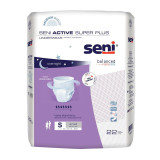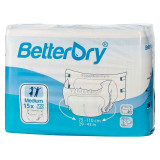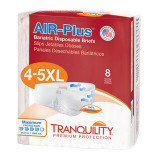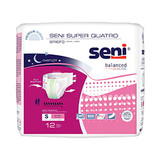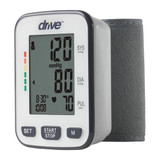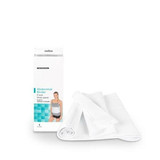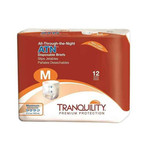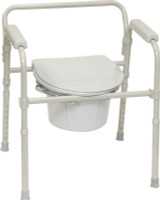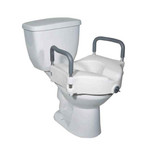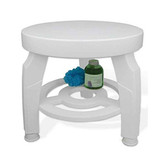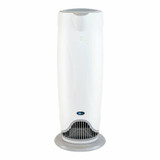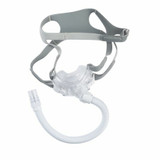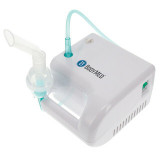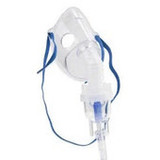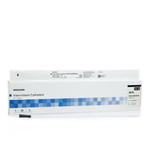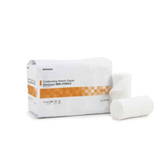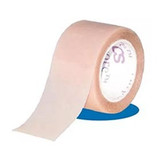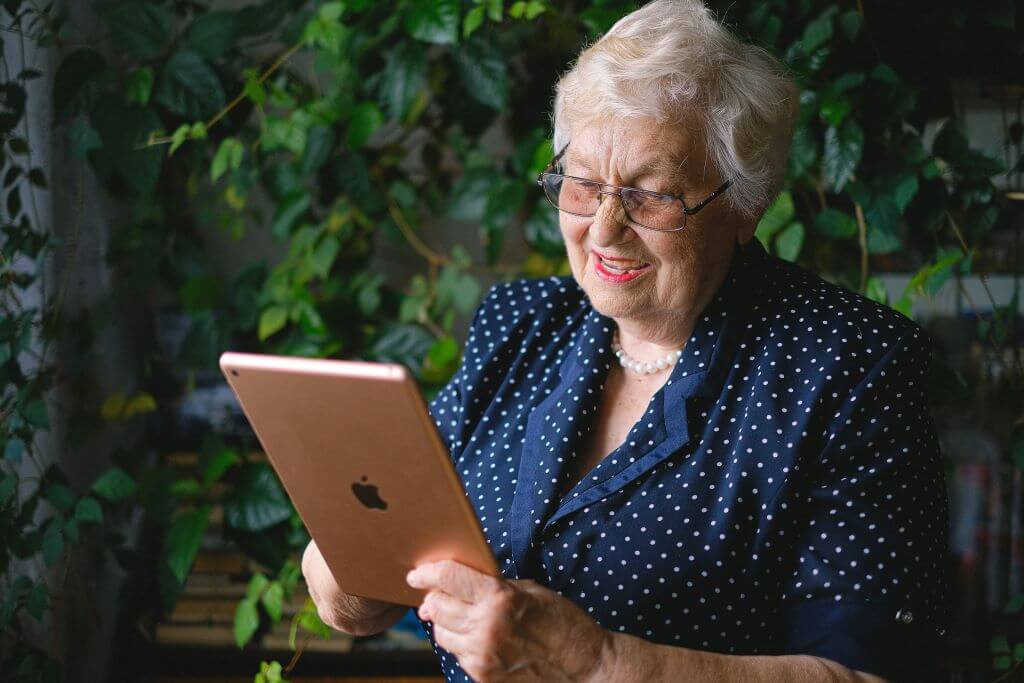
The Caregiver Guide – Harnessing Assistive Technology
Caregiving in the US has seen spectacular growth in recent years. According to the AARP’s (formerly the American Association of Retired Persons) Caregiving in the United States 2020 report, 53 million people provided unpaid care to someone else in 2020, compared to 43.5 million in 2015. That’s a growth of almost 22%, and this growth is expected to continue.
Thanks to modern medical technology, life expectancy has rocketed, and the average age of the population is rising steadily. Coupled with extremely high healthcare costs in the US, more and more people resort to taking care of a loved one with health or functional issues themselves.
The demands of caregiving, both physical and mental, take a toll on caregivers. The same AARP report we referenced above has a few chilling statistics.
· 21% of caregivers reported that their own health has deteriorated
· 45% have experienced at least one financial issue
· 61% have a job
· 24% are caring for more than one person
These numbers clearly indicate that some caregivers take immense strain and would be grateful for any help they can get that would lighten their load. And this is where modern technology may play a very significant role. The 21st century has seen some spectacular technological advances and produced a multitude of devices or applications for the home care or self-care environment.
The Value of Assistive Technology in Caregiving
Assistive technology refers to a broad spectrum of devices and systems that address challenges faced by older adults or people with disabilities. These technologies not only assist caregivers in their daily tasks but also empower seniors to maintain their independence and improve their overall well-being. From caregiver guides to a wide range of gadgets specifically designed for elderly care, these technological innovations are transforming the way we provide support and enhance the quality of life for seniors.
By understanding the importance of assistive technology in senior care, both caregivers and seniors themselves can make informed decisions about which tools are best suited to their specific needs. In this guide, we will introduce you to the areas of caregiving where assistive technology will make a difference and the types of technology available. We’ll explain why you should embrace the technology and provide some guidance on how you should choose a specific device or app.
Types of Assistive Technology
Mobility Aids
As we age, many of us will begin to experience difficulty in moving around. This may stem from balance issues, deteriorating joints or an injury. The impairment may be mild, requiring only a little additional support for stability, or it could be pretty severe, where the person cannot move independently. Fortunately, there are various mobility aids available to suit everyone.
Canes and Walkers. Starting at the bottom end of the cost and weight spectrum are the cane and the walker. A cane is simply a rod that helps the user balance or reduce the weight on one leg. A basic walker has four legs and provides more stability for a higher degree of impairment. Rollator walkers have wheels, brakes and a seat. This allows the user to rest if necessary, and the brakes prevent the walker from rolling away unintentionally.
Wheelchairs. A little further up the price ladder are wheelchairs. They range from basic chairs with wheels to autonomous motorized versions. They provide a comfortable and secure seated ride, allowing individuals to move around with ease. Manual wheelchairs are propelled by the user turning the large rear wheels or being pushed by someone else. Motorized wheelchairs have an electric motor that drives the wheels.
Mobility Scooters. Slightly less costly than a power wheelchair on average, a mobility scooter is designed to be more maneuverable. They also handle uneven surfaces better than wheelchairs and provide a comfortable ride for longer distances. They offer independence and freedom of movement both indoors and outdoors.
Communication and Socialization Solutions
Communication and socialization play a crucial role in the well-being of older adults. With the advancements in technology, senior-friendly smartphones and video-calling devices have become more accessible, allowing seniors to stay connected with their loved ones. These devices are designed with user-friendly interfaces and larger buttons to cater to the specific needs of older adults.
Hardware. There are several senior-friendly smartphone and tablet options available nowadays. These devices have various unique features that make them easier to use for people with vision or hearing impairment or who cannot get to grips with modern technology. These features include:
· High contrast displays
· Simplified user interface
· One-touch call connection
· Large button keyboards
· Keyboards with braille
· Voice-activated commands
Software Applications. Social media platforms have become as popular among older adults as a means of staying connected as they are among youngsters. Platforms like Facebook, Twitter, and Instagram allow seniors to connect with old friends, join interest groups or communities, share photos and memories, and engage in discussions.
The use of senior-friendly smartphones, video calling devices, and social media platforms can significantly enhance the communication and socialization experiences of older adults. It allows them to maintain relationships, combat feelings of isolation or loneliness often associated with aging, and actively participate in the digital world.
Safety and Security
With a sharp increase in crime rates over the last few decades, safety and security have become major concerns. The aging population and our inherent desire to be independent also means there are more medically vulnerable people living alone. Fortunately, advancements in technology have led to the development of various systems that help ensure the well-being of vulnerable individuals.
Smart home security systems. They offer comprehensive protection for homes by integrating advanced technologies such as surveillance cameras, motion sensors, door/window sensors, and smart locks. These interconnected devices provide real-time monitoring and alerts to homeowners regarding potential threats or unauthorized access. Additionally, many smart home security systems can be remotely controlled and monitored through smartphone applications, offering convenience and peace of mind even when away from home.
Medical alert systems. These applications are designed to provide immediate assistance in case of emergencies, particularly for individuals who may be prone to falls or have medical conditions that require timely intervention. They usually include wearable devices equipped with fall detection sensors and emergency buttons. In the event of a fall or emergency, the system automatically alerts a monitoring center or designated contacts, allowing for prompt medical attention.
Health Monitoring
The advent of wearable health trackers, medication management apps, and telehealth services has revolutionized health monitoring. These technologies have made it easier than ever for individuals to take control of their own health and well-being.
Wearable health trackers, such as fitness bands or smartwatches, enable users to monitor their physical activity levels, heart rate, sleep patterns, and more. These devices provide valuable insights into one's overall health and can motivate individuals to make positive lifestyle changes.
Medication management apps have also proven to be incredibly beneficial in ensuring that individuals take their medications as prescribed. These apps send reminders for medication doses, track adherence rates, and even provide information on potential drug interactions or side effects.
Telehealth services have become increasingly popular in recent years, especially with the rise of virtual doctor visits. Through telehealth platforms, individuals can consult with healthcare professionals remotely via video calls or phone consultations. This allows for convenient access to medical advice and reduces the need for in-person visits for non-emergency situations.
Choosing the Right Assistive Technology
With the wide range of solutions available, it can be overwhelming to determine which assistive devices or applications are most suitable. Start by assessing the specific needs of the individual and consider their physical abilities, cognitive function, and any particular challenges they may face. This will help narrow down the options that cater to their unique requirements.
Usability is a key factor in ensuring that assistive technology is effective for seniors. Look for devices that have intuitive interfaces and are easy to operate. Consider whether the device requires technical expertise or extensive training to use effectively. Additionally, ensure that the device aligns with the user's level of technological proficiency.
Compatibility is another important consideration when selecting assistive technology solutions for seniors. Determine if the device can seamlessly integrate into their existing environment or if any modifications are needed. Assess whether it can work with other devices or systems they already use.
It is also advisable to seek advice from healthcare professionals or experts in assistive technology who can provide recommendations based on individual needs and preferences. They can offer insights into specific products or services that have proven successful in similar situations.
The Benefits of Assistive Technology in Caregiving
One of the key benefits of using assistive technology in caregiving is increased independence for seniors. With the help of devices such as wearable health monitors, smart home systems, and medication reminders, seniors can maintain a sense of autonomy while receiving necessary support. This empowers them to live more fulfilling lives and reduces their reliance on constant assistance.
Assistive technology also plays a crucial role in improving safety within caregiving environments. Devices like fall detection sensors, emergency call buttons, and GPS tracking systems can help prevent accidents or promptly respond to emergencies. Caregivers can have peace of mind knowing they have access to tools that enhance the safety and security of their loved ones.
Furthermore, incorporating assistive technology in senior caregiving can streamline communication between caregivers, healthcare professionals, and family members. Digital platforms allow for easy sharing of medical records, medication schedules, and important updates regarding the senior's health status. This promotes collaboration among all parties involved in providing care and ensures everyone is well-informed about the senior's needs.
Lastly, assistive technology helps alleviate some of the physical strain on caregivers by automating certain tasks. For example, lifting aids or transfer devices can reduce the risk of injuries when assisting with mobility issues. Robotic companions or virtual assistants can also provide companionship to seniors when caregivers need time for themselves or other responsibilities.
The Future of Assistive Technology
Emerging technologies in senior care are paving the way for a future where more aging adults can live independently and comfortably. One of the most notable trends in assistive technology for seniors is the use of AI-powered devices. These devices are designed to understand and respond to the unique needs of each individual. They can provide reminders for medication, monitor vital signs, and even offer companionship through virtual assistants.
Virtual reality (VR) is also making its mark in senior care. VR technology has shown promising results in improving cognitive function, reducing social isolation, and providing immersive experiences that enhance overall well-being. From virtual travel experiences to interactive games, VR has the potential to improve the quality of life for elderly individuals significantly.
Smart homes equipped with advanced sensors and automation systems are another key innovation in senior care. These homes support aging-in-place by providing a safe and comfortable environment. Smart home technologies can monitor movement patterns, detect falls, adjust lighting and temperature settings automatically, and even remind seniors about important tasks or appointments.
Embracing Assistive Technology
Caregivers play a vital role in identifying the specific needs and challenges seniors face and then selecting the appropriate assistive technologies to address those needs. Caregivers are often relied on to research, acquire, and set up these technologies in the senior's living environment.
By embracing assistive technology, caregivers can improve safety measures, enhance communication between seniors and their healthcare providers, monitor health conditions more effectively and promote independence for seniors. These technologies range from simple devices like medication reminders or fall detection systems to more advanced solutions like smart home automation or telehealth platforms.
Caregivers need to stay informed about the latest advancements in assistive technology and understand how they can be integrated into the care routine. Training programs and resources are available to help caregivers become proficient in using these tools effectively.
At LL Medico, we understand the challenges of caregiving. After all, we have been in the senior care market for over 25 years. We encourage caregivers to use all the resources at their disposal to make their role easier. These resources include the assistive devices we have discussed in this guide, as well as support from various sources, all of whom will gladly and readily help.
LL Medico strives to support caregivers by providing top-quality senior care products at the best possible prices. We have a range of walkers, rollators, and wheelchairs to choose from, and we can also assist with other common caregiver supplies like, among others, adult diapers and urology devices. Our Autoship feature allows you to place a repeat order and relieves you from the worry of managing supplies. Call us at (855) 422-4556 or email [email protected].










